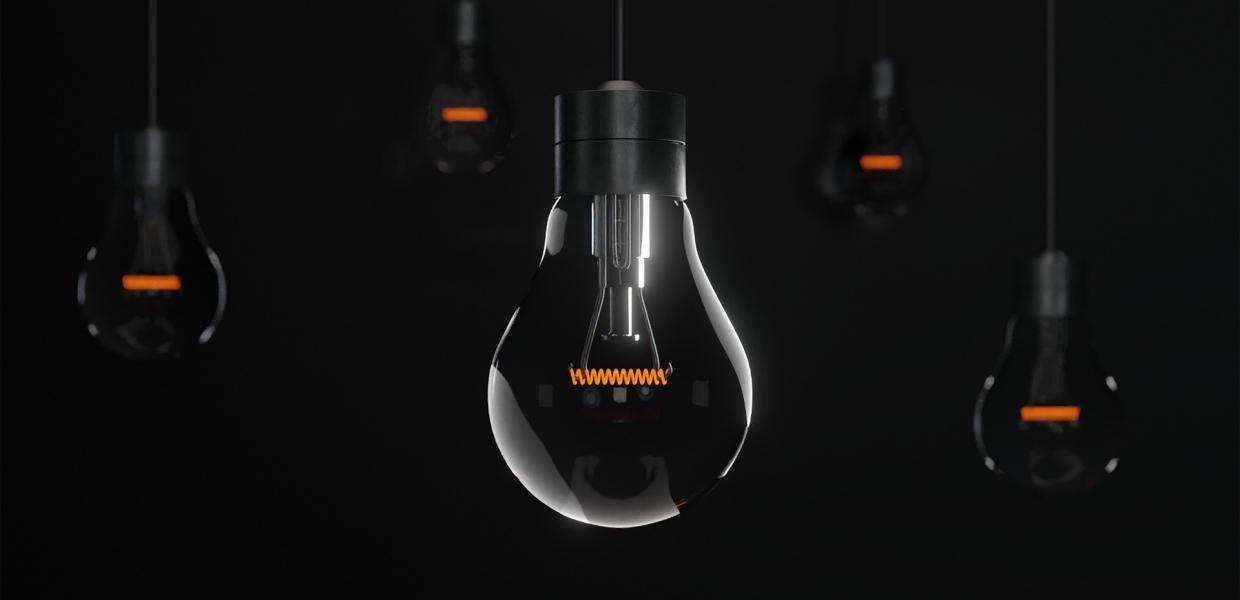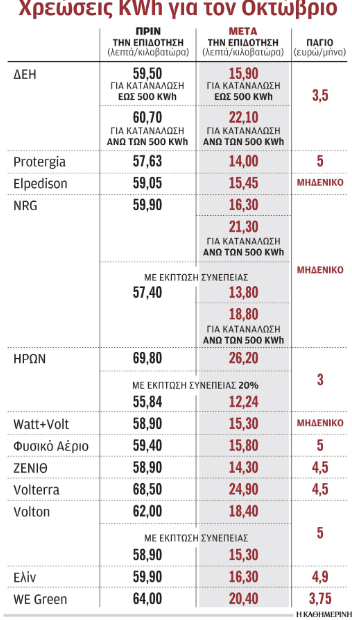
the point: It is final. Let’s go to the forced reduction in energy consumption. When and for whom will the electricity be cut off? What will happen to families? All developments in xristika.gr.
The state should reduce electricity consumption in winter by 5% in periods of high demand based on the authority’s proposals.
Scenarios are developed on the basis of which it will fulfill the binding obligations as well as the recommendations of the Authority to reduce energy consumption during peak hours by the relevant government employees.
Electricity: Mandatory reduction of consumption by 5%.
The Commission obliges EU member states to cut electricity demand by 5% during peak hours, while recommending member states set 10% of hours at the highest expected price and reduce overall demand during peak hours until March 31.
However, it is still questionable how Greece will be able to achieve the mandatory 5% reduction target during peak hours, since there is still no possibility to calculate the largest hourly network consumer, low voltage, ie. households and small businesses, which account for about 65% of total domestic demand.
The only thing that is certain in the data so far is that near sunset (afternoon to evening) and for two to three hours after November 1 through March 2023, electricity will not be available to everyone.
Electricity: Less consumption and more support
According to Sky, the Greek plan is for a mandatory 5% reduction in electricity consumption during peak hours, i.e. from 1 pm to 4 pm and from 8 pm to 10 pm.
However, based on government statements so far, there will be no obligation on households, but incentives to reduce consumption, with reverse proportional support.
In particular, the electricity bill subsidy for households will be increased which will reduce consumption by 15% compared to the corresponding month of 2021.
That is, the creed that the government will apply will be “less consumption, more subsidies”.
However, according to ADMIE, the numbers are different and its peak hours in the past were from December to February from 6pm to 8pm and from June to August from 9pm to 10pm.
DEDDIE, according to other information, has a basic three-hour prime-time guide from 10 AM to 1 PM in the morning and 6 PM to 8 PM in the evening.
Electricity: gradual support will create many problems
Many problems are expected to arise with the expanded support, according to the head of the PPC union, Costas Manyatis, who, as he described it in Open, it is impossible to immediately notice the decrease in household consumption, due to the significant shortage of personnel, “incorrect measurements towards the consumer.” We don’t measure every month, but every four months.”
He emphasized that since there is no real direct measurement of consumption, the first calculations would not record a decrease, even if it was achieved.
This is because families who have a bill every four months will not get the benefit for several months, when they have to pay the cost. Those who choose bi-monthly or monthly will be charged an “approximate consumption” before the actual measurement is made.
Current: industry and large enterprises
Industry and large commercial enterprises collectively account for 35% of the demand, and the most important issue for these units is the identification of peak hours with the highest consumption.
Processing of historical data so far shows that the peak in winter (October-March) occurs near sunset, from 6 PM to 9 PM or 7 PM – 10 PM.
However, it is not excluded that the “zone” of load reductions will also be extended in the morning between 9.00 and 10.00, when, although there is no peak, prices are high.
Electricity: which company has the lowest tariff – see prices
Electricity prices for the vast majority of residential consumers (up to 500 kWh) will be held in October at levels of 14 to 17 cents/kWh, with higher subsidies absorbing 90% of increases.
The second scale charge for consumption (501 to 1,000 kWh/month) will vary above 19 minutes and up to 31.2 minutes per kWh, and much higher for consumption over 1,000 kWh, which is just 2% of consumers.
The government, according to announcements yesterday by Environment and Energy Minister Costas Skrekas, will allocate a total of 1.1 billion to support the accounts in October.
Of these, €1 billion comes from the recovery of surplus revenue from power generation companies and pollutant auction proceeds and €100 million from the state budget, Kathimerini said in a report.
Current: tiered support
For October, a graduated subsidy is applied, which is 43.6 cents per kilowatt-hour for the first meter, 38.6 cents per kilowatt-hour for the second meter and 33.6 cents for the second against a single subsidy of 63.9 cents in September.
In the case of the second and third scales, an additional subsidy of 50 euros per megawatt-hour is provided to households that will reduce their consumption by 15% compared to the corresponding period last year.
A corresponding savings stimulus was not expected for the first scale which represents 90% of total consumption.
Subsidies absorb 70%-90% of increases (depending on size) and for families included in the KOT nearly 100% with a subsidy of up to 48.5 cents per kilowatt-hour.
Current: tariffs
Tariffs range from 57.63 to 69.8 cents per kilowatt-hour, and most suppliers charge around 60 cents.
An exception is Heron’s generous tariff at a nominal price of 69.8 cents/kWh, which, however, after deducting consistency (20%), is limited to 55.84 cents.
Price after support was set at 26.2 cents to end up after deducting consistency at 12.24 cents/kWh. The lowest tariff for the month of October is from Protergia At a symbolic price of 57.63 cents per kilowatt-hour, and the final price after the subsidy is 14 cents.
Compared to the previous month, the largest reductions (25%) were made by PPC, priced at 59.5 cents for consumption up to 500 kWh and 60.7 cents for consumption above 500 compared to 78.8 and 80 cents per kWh, respectively.
Pay-per-click tariffs are set at 15.9 and 22.1 cents per kilowatt-hour for the two consumption scales.
Current: examples
According to examples from the Ministry of the Interior, a family with an average monthly consumption of 400 kWh / month will pay 236 euros without subsidies and with subsidies will pay 62 euros.
A family with an average monthly consumption of 700 kWh/month will pay 413 euros and with subsidies they will pay 118 euros.
If he does not reduce his consumption by 15%, he will pay 108 euros. A family with an average monthly consumption of 1200 kW will pay.
For companies with a power supply of up to 35 kVA, the subsidy for the first 2,000 kWh in October is 39.8 cents per kWh and absorbs 80% of the increase.
For consumptions exceeding 2000 kWh plus all other non-domestic low, medium and high voltage tariffs, the subsidy is 23 cents per kWh.
For farmers, the subsidy is horizontal and reaches 43.6 cents per kilowatt-hour.

“Avid problem solver. Extreme social media junkie. Beer buff. Coffee guru. Internet geek. Travel ninja.”






More Stories
“Recycling – Changing the water heater”: the possibility of paying the financing to the institution once or partially
Libya: US General Meets Haftar Amid Tensions Between Governments
New tax exemption package and incentives for business and corporate mergers..